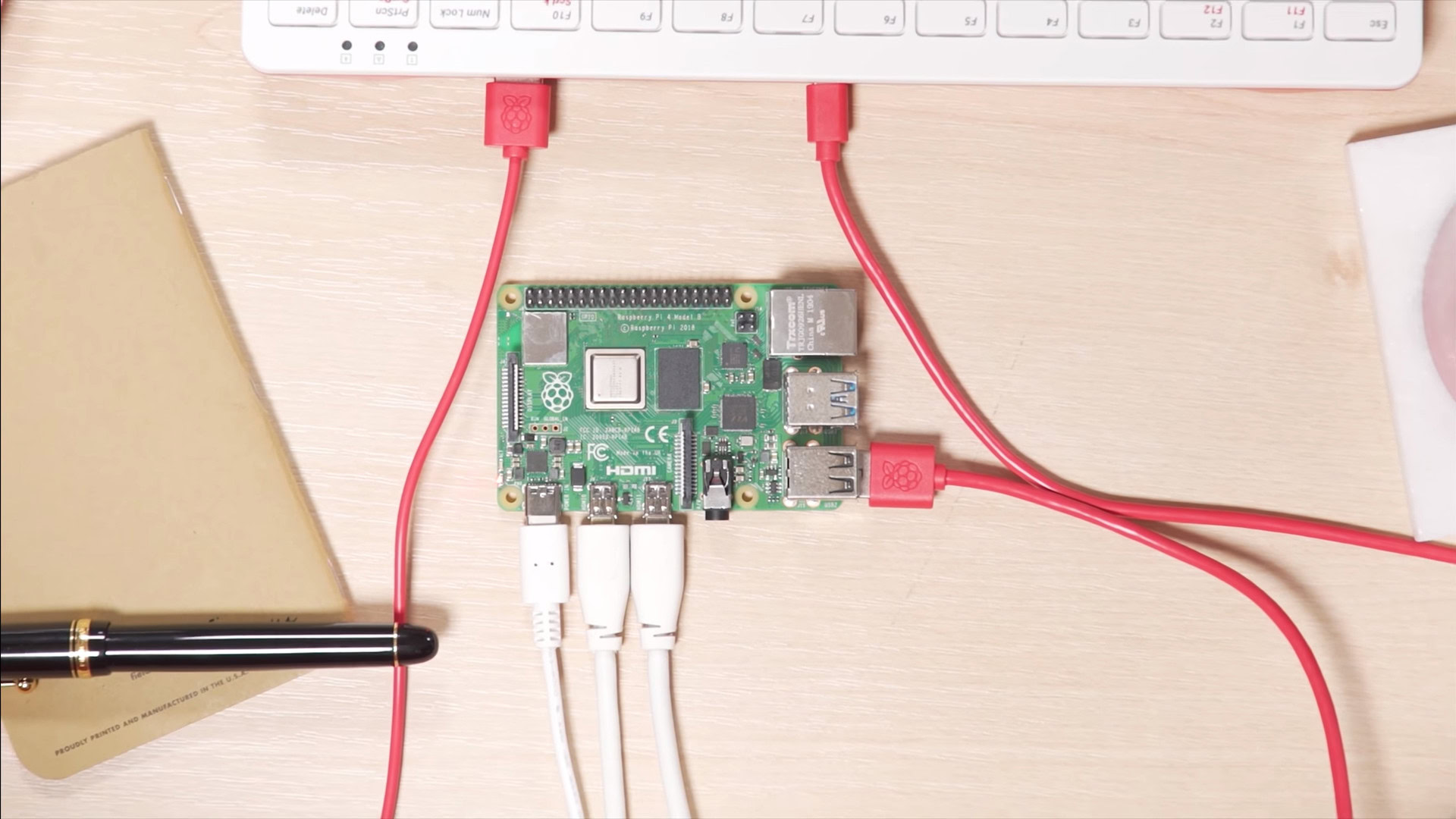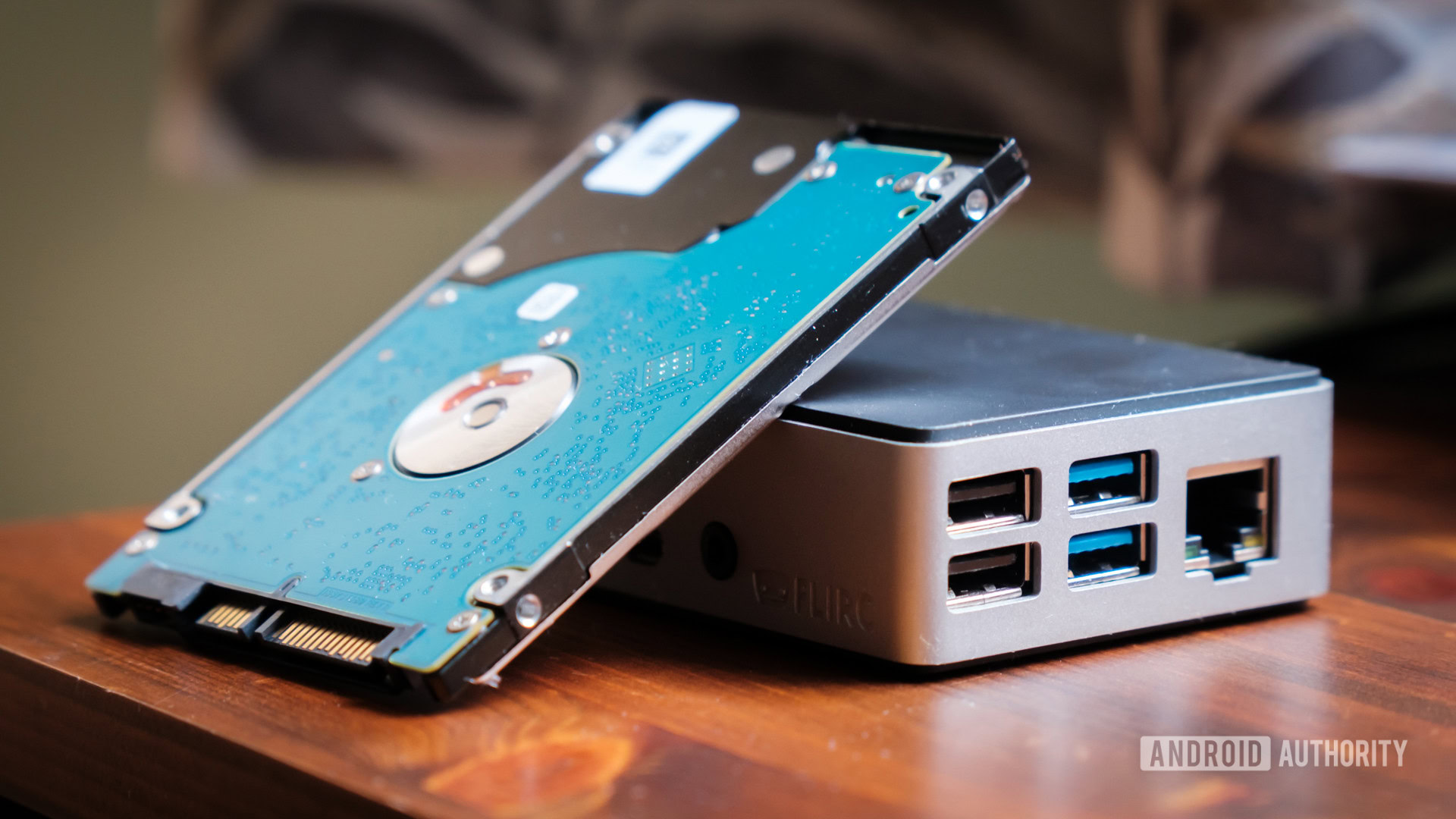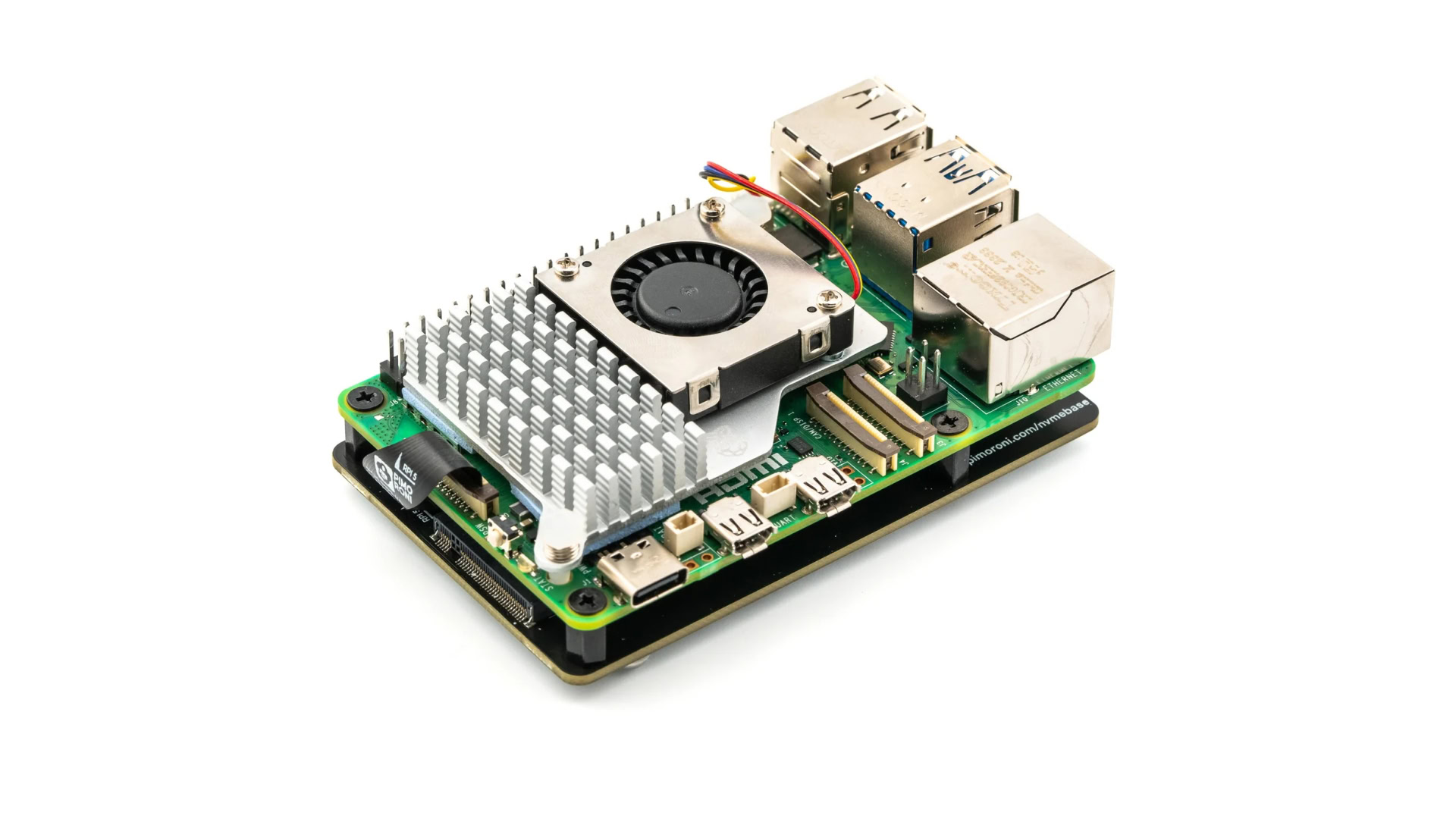Affiliate links on Android Authority may earn us a commission. Learn more.
Raspberry Pi 5 vs Raspberry Pi 4: Which single-board computer should you buy?
Published onMarch 23, 2025

If you’re looking to experiment with electronics or computers, chances are that you’ve heard about the Raspberry Pi. With its tiny form factor and ability to run 24×7 without registering on your power bill, there’s almost no downside to the family of single-board computers. But even though we now have the Raspberry Pi 5, you may still find the half-a-decade-old Pi 4 on store shelves. The two models target different budgets, with slightly lower specs as you’d expect from an older device. So with all of these differences, it’s worth asking: what’s the difference between the Raspberry Pi 5 vs Raspberry Pi 4? And more importantly, is the newer Pi 5 worth buying?
Raspberry Pi 5 vs Raspberry Pi 4: Specs at a glance
| Raspberry Pi 5 | Raspberry Pi 4 | |
|---|---|---|
SoC | Raspberry Pi 5 CPU: 4x Cortex-A76 at 2.4 GHz GPU: VideoCore VII @ 800 MHz | Raspberry Pi 4 CPU: 4x Cortex-A72 at 1.8 GHz GPU: VideoCore VI @ 500 MHz |
RAM | Raspberry Pi 5 4GB or 8GB LPDDR4X-4267 | Raspberry Pi 4 1GB, 2GB, 4GB, or 8GB LPDDR4-3200 |
Display output | Raspberry Pi 5 Two 4K 60Hz displays via miniHDMI ports | Raspberry Pi 4 4K 60Hz (single display) or two 4K 30Hz displays via miniHDMI ports |
USB | Raspberry Pi 5 2x USB 2.0 2x USB 3.0 @ 5Gbps | Raspberry Pi 4 2x USB 2.0 2x USB 3.0 |
Boot storage | Raspberry Pi 5 MicroSD card slot (UHS-I) 104 MBps | Raspberry Pi 4 MicroSD card slot 52 MBps |
Connectivity | Raspberry Pi 5 Dual band Wi-Fi 5 Bluetooth Low Energy (BLE) Gigabit Ethernet | Raspberry Pi 4 Dual band Wi-Fi 5 Bluetooth Low Energy (BLE) Gigabit Ethernet |
Power | Raspberry Pi 5 5V 5A recommended via USB-C port PoE+ support Onboard power button | Raspberry Pi 4 5V 3A minimum via USB-C port PoE support |
Accessory support | Raspberry Pi 5 40-pin GPIO PCIe 2.0 interface (adapter required) Fan header Camera connector | Raspberry Pi 4 40-pin GPIO 4-pole audio and video port Camera connector |
Raspberry Pi 5 vs Raspberry Pi 4: Performance
From a raw performance standpoint, the Raspberry Pi 5 completely outclasses the Pi 4. Going from Arm Cortex-A72 in the Pi 4’s SoC to Cortex-A76 cores is a big jump in its own right as these cores are three generations apart. But on top of that, we also get a healthy 600MHz clock speed bump, which adds to the performance delta.
In our testing video above, we found that the Raspberry Pi 5 performs almost twice as fast as its predecessor in the real world. Whether it’s code compilation or just web browsing, you will definitely notice the Pi 5’s additional headroom. Speaking from experience, I found my own Raspberry Pi 4 can sometimes struggle when rendering and scrolling through heavier web pages like YouTube.
The Pi 5 will feel snappier even in general tasks like web browsing.
The GPU has received a similar bump in performance, with its own 300MHz clock speed increase. That said, don’t expect any miracles as you may still notice dropped frames when streaming 4K video via YouTube or similar sites. If you plan to use your Raspberry Pi with a monitor, I highly recommend getting the latest model.
The Raspberry Pi 5’s increased CPU and GPU speeds mean that you can expect better performance in heavier tasks like gaming, emulation, and even running NAS or file server software. I noticed faster load times for many self-hosted apps like Home Assistant smart home software and Plex when upgrading between past Pi generations. So it’s safe to expect the same for the latest model too.
You may need a fan to unlock the Pi 5's full potential.
However, the increased performance comes at a pretty big cost to thermals. When stressed, you will definitely reach the thermal throttling threshold of the Pi 5’s SoC. That’s around 80 degrees Celsius, meaning you’ll need a fan or active cooling to unlock the board’s full potential. With the older Raspberry Pi 4, you can get away with a simple passive cooler in the form of an aluminum heatsink. We found that the Pi 5 will thermal throttle within minutes if you don’t add a cooler. Even something like watching a 1080p YouTube video can stress it to the point of reduced performance.
Raspberry Pi 5 vs Raspberry Pi 4: Display output

The Raspberry Pi 4 was the first in the series to support 4K displays but it didn’t have enough grunt to drive two of them at 60Hz. And even with just one 4K 60Hz display, many users reported dealing with a sluggish UI and choppy navigation.
With its higher CPU and GPU headroom, the Raspberry Pi 5 doesn’t struggle nearly as much. In fact, it can even drive two 4K displays at 60Hz simultaneously. Unfortunately, the Raspberry Pi 5 keeps the dual micro HDMI ports from the Pi 4. These ports save space on the board, but you probably don’t have any micro HDMI cables lying around.
Raspberry Pi 5 vs Raspberry Pi 4: Storage and I/O

The Raspberry Pi 5 and Pi 4 both share the same connectivity options, but speeds have improved significantly between generations. For example, the USB 3.0 ports can now come closer to their 5 Gbps rated speeds, thanks to the Pi 5’s new I/O chip. Early testing has found that the Raspberry Pi 5 can already achieve higher peak transfer speeds as compared to its predecessor.
The Pi 5 can finally take full advantage of modern USB 3 devices.
Besides faster speeds over USB, the Raspberry Pi 5 also features a brand-new PCI Express 2.0 interface. In theory, this means that you can finally connect high-speed peripherals like NVMe SSDs and network cards to a Raspberry Pi. However, you will need a Hardware Attached on Top (HAT) or adapter to connect such accessories as pictured below.
The Raspberry Pi 5’s microSD card slot is also two times faster than the Pi 4, with the new model supporting a peak throughput of 104 MBps. This is not a big deal, though, as most Raspberry Pi enthusiasts have always recommended booting off a USB flash drive instead of a microSD card.
Raspberry Pi 5 vs Raspberry Pi 4: Power draw and other changes

The Raspberry Pi 5 will gladly accept more power than the Pi 4 in service of the faster CPU and GPU. The Raspberry Pi 5’s manual even calls for a 5V 5A USB-C adapter vs. the Pi 4’s 5V 3A minimum spec. That’s not a massive difference, but it’s worth noting if you plan to deploy many boards around your house. The older Raspberry Pi 4 will consume less power when pushed to its limits and won’t require a fan to cool it down either.
Speaking of cooling, the Pi 5 also gains a new fan connector and an official cooling accessory. There’s a new power button too, finally allowing you to power on or shutdown without yanking on the cable. These are minor quality of life improvements, however, and also come at the cost of some other long-standing connectors.
The newer Pi gains a power button but loses the audio jack.
Unfortunately, the Raspberry Pi 5 has done away with the long-standing composite video and audio jack, meaning you’ll need to use HDMI instead. The camera connector has also changed, so be prepared to buy new cables if you already own a Pi camera module.
Raspberry Pi 5 vs Raspberry Pi 4: Pricing and verdict

The Raspberry Pi 5 sits on store shelves in 2GB, 4GB, 8GB, and 16GB RAM variants, which means a starting price of $50. That’s quite a bit dearer than the Pi 4’s $35 entry point, even if the latter limits you to just 1GB of RAM. However, the 2GB variant is only slightly more expensive than the equivalent on the Pi 4.
On the flip side, however, you absolutely should not buy the $120 Raspberry Pi 5 as it’s overkill for most applications. You can buy a full-fledged mini-PC with much better specs for some more cash at that point.
If you only plan to host a light media server or network-wide ad blocker, there’s no shame in picking up the older Raspberry Pi 4. I still have a Pi 3 all these years later and haven’t found its 1GB of RAM limiting for running Plex and a handful of other web servers. That said, my needs are relatively modest and I don’t mind waiting for things to load. If you’re starting from scratch today, I’d recommend the $45 Raspberry Pi 4 at minimum.
The older Raspberry Pi 4 still has a big price advantage.
On the other hand, the Raspberry Pi 5 is a much better bet if you plan to use it as a full-fledged computer with a connected display. The additional processing grunt alone will net you a much smoother experience. Moreover, the Pi 5 is far more appealing once you scale up to the 4GB and 8GB RAM variants, where the price difference vs. the Pi 4 drops to just $5. Which Raspberry Pi model would you pick?